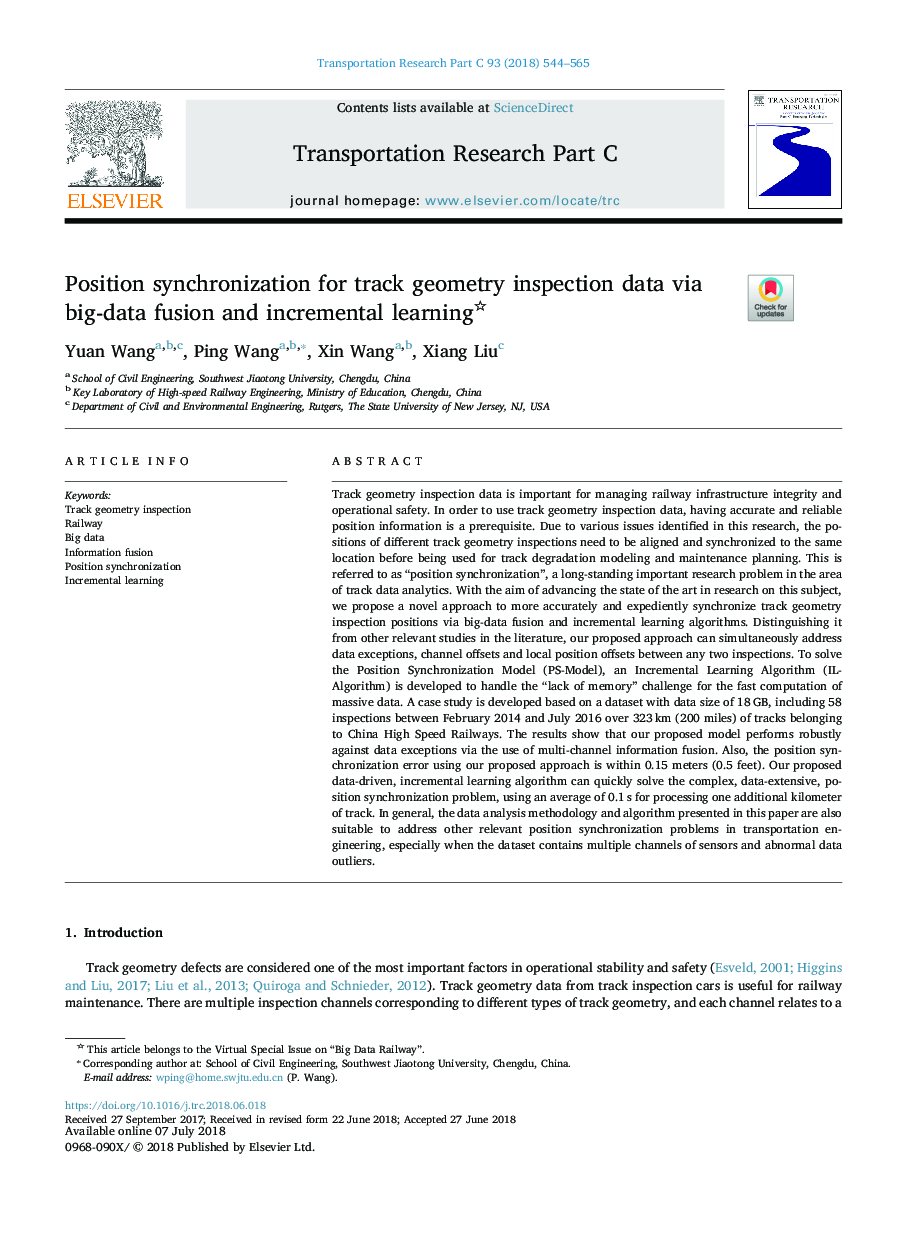| Article ID | Journal | Published Year | Pages | File Type |
|---|---|---|---|---|
| 6935799 | Transportation Research Part C: Emerging Technologies | 2018 | 22 Pages |
Abstract
Track geometry inspection data is important for managing railway infrastructure integrity and operational safety. In order to use track geometry inspection data, having accurate and reliable position information is a prerequisite. Due to various issues identified in this research, the positions of different track geometry inspections need to be aligned and synchronized to the same location before being used for track degradation modeling and maintenance planning. This is referred to as “position synchronization”, a long-standing important research problem in the area of track data analytics. With the aim of advancing the state of the art in research on this subject, we propose a novel approach to more accurately and expediently synchronize track geometry inspection positions via big-data fusion and incremental learning algorithms. Distinguishing it from other relevant studies in the literature, our proposed approach can simultaneously address data exceptions, channel offsets and local position offsets between any two inspections. To solve the Position Synchronization Model (PS-Model), an Incremental Learning Algorithm (IL-Algorithm) is developed to handle the “lack of memory” challenge for the fast computation of massive data. A case study is developed based on a dataset with data size of 18â¯GB, including 58 inspections between February 2014 and July 2016 over 323â¯km (200 miles) of tracks belonging to China High Speed Railways. The results show that our proposed model performs robustly against data exceptions via the use of multi-channel information fusion. Also, the position synchronization error using our proposed approach is within 0.15 meters (0.5 feet). Our proposed data-driven, incremental learning algorithm can quickly solve the complex, data-extensive, position synchronization problem, using an average of 0.1â¯s for processing one additional kilometer of track. In general, the data analysis methodology and algorithm presented in this paper are also suitable to address other relevant position synchronization problems in transportation engineering, especially when the dataset contains multiple channels of sensors and abnormal data outliers.
Related Topics
Physical Sciences and Engineering
Computer Science
Computer Science Applications
Authors
Yuan Wang, Ping Wang, Xin Wang, Xiang Liu,
